#Agricultural Buildings
Text
Recycle
Not to go into too much background detail, quite a few of you already know it, but my family had been cleaning up the Situation at my late father's farm for years, even before he passed away. Our beloved [hmph] county has limited recycling options. In fact, for "chemical waste" there is only ONE DAY every TWO YEARS that you can drop off things you want to get rid of responsibly. Bearing in mind that, in a rural area, just taking a jug of ??whatever?? and dumping it somewhere is 1) wrong but 2) absolutely guaranteed to go unnoticed and unpunished.
We don't want to do that! We want it properly and safely recycled. But what we have, after investigating all eleven buildings on the farm where junk was stashed, is an enormous quantity of jugs, containers, buckets, and decomposing paper bags of. stuff. Old agricultural stuff, mainly, but also machinist/metal-working stuff. Most of it unlabeled, or with labels too old and worn to be read. The large glass jug of concentrated sulfuric acid was an anomaly in that it was clearly labeled in in a proper container (glass wine jug, but hey, glass is glass)
We had quite a lot of this already gathered up in October of 2019 (ha! The good old days! so quaint!). However, that October we were also planning and preparing to be a temporary wedding venue; my brother and SIL were getting married the next weekend and that had to be a priority over recycling.
October 2021 rolled around, but my husband and I were both a little distracted and, honestly, we just forgot about it. There's almost NO advertisement of this event, by the way. We were aggravated, but there was nothing to do but stockpile all that damned chemical waste for another two years.
Yesterday my husband very c-a-r-e-f-u-l-l-y loaded the bed of his pickup truck with all this . . . mess. Buckets, bottles, plastic, glass, cardboard, bags. It FILLED the 8-foot bed of the pickup. And this morning, early, he very c-a-r-e-f-u-l-l-y drove off to the county fairgrounds, to turn it all in. It will be quite a large relief to all of us to have this done with.
Damn, Dad. How DID you make SUCH a mess of this farm. How?!!!



[These are old pix from January 2021]
29 notes
·
View notes
Text
Legit though, we should start turning ecosystem restoration and work to make our world more tolerant to the effects of climate change into annual holidays and festivals
Like how just about every culture used to have festivals to celebrate the beginning of the harvest or its end, or the beginning of planting, or how whole communities used to host barn raisings and quilting bees - everyone coming together at once to turn the work of months or years into the work of a few days
Humble suggestions for festival types:
Goat festival
Besides controlled burns (which you can't do if there's too much dead brush), the fastest, most effective, and most cost-efficient way to clear brush before fire season - esp really heavy dead brush - is to just. Put a bunch of goats on your land for a few days!
Remember that Shark Tank competitor who wanted to start a goat rental company, and everyone was like wtf? There was even a whole John Oliver bit making fun of the idea? Well THAT JUST PROVES THEY'RE FROM NICE WET PLACES, because goat rental companies are totally a thing, and they're great.
So like. Why don't we have a weekend where everyone with goats just takes those goats to the nearest land that needs a ton of clearing? Public officials could put up maps of where on public lands grazing is needed, and where it definitely shouldn't happen. Farmers and people/groups with a lot of acres that need clearing can post Goat Requests.
Little kids can make goat-themed crafts and give the goats lots of pets or treats at the end of the day for doing such a good job. Volunteers can help wrangle things so goats don't get where they're not supposed to (and everyone fences off land nowadays anyway, mostly). And the goats, of course, would be in fucking banquet paradise.
Planting Festival and Harvest Festival
Why mess with success??? Bring these back where they've disappeared!!! Time to swarm the community gardens and help everyone near you with a farm make sure that all of their seeds are sown and none of the food goes to waste in the fields, decaying and unpicked.
And then set up distribution parts of the festival so all the extra food gets where it needs to be! Boxes of free lemons in front of your house because you have 80 goddamned lemons are great, but you know what else would be great? An organized effort to take that shit to food pantries (which SUPER rarely get fresh produce, because they can't hold anything perishable for long at all) and community/farmer's markets
Rain Capture Festival
The "water year" - how we track annual rainfall and precipitation - is offset from the regular calendar year because, like, that's just when water cycles through the ecosystems (e.g. meltwater). At least in the US, the water year is October 1st through September 30th of the next year, because October 1st is around when all the snowmelt from last year is gone, and a new cycle is starting as rain begins to fall again in earnest.
So why don't we all have a big barn raising equivalent every September to build rain capture infrastructure?
Team up with some neighbors to turn one of those little grass strips on the sidewalk into a rain-garden with fall-planting plants. Go down to your local church and help them install some gutters and rain barrels. Help deculvert rivers so they run through the dirt again, and make sure all the storm drains in your neighborhood are nice and clear.
Even better, all of this - ESPECIALLY the rain gardens - will also help a ton with flood control!
I'm so serious about how cool this could be, yall.
And people who can't or don't want to do physical stuff for any of these festivals could volunteer to watch children or cook food for the festival or whatever else might need to be done!
Parties afterward to celebrate all the good work done! Community building and direct local improvements to help protect ourselves from climate change!
The possibilities are literally endless, so not to sound like an influencer or some shit, but please DO comment or reply or put it in the notes if you have thoughts, esp on other things we could hold festivals like this for.
Canning festivals. "Dig your elderly neighbors out of the snow" festivals. Endangered species nesting count festival. Plant fruit trees on public land and parks festival. All of the things that I don't know anywhere near enough to think of. Especially in more niche or extreme ecosystems, there are so many possibilities that could do a lot of good
#climate change#climate action#climate crisis#climate hope#solarpunk#hopepunk#hope posting#community building#ecosystem#ecosystem restoration#forest fire#fire prevention#flood#flood prevention#harvest#harvest festival#regenerative agriculture#modern farming#water conservation#meteorology#festival#not news#hope#climate optimism
3K notes
·
View notes
Text
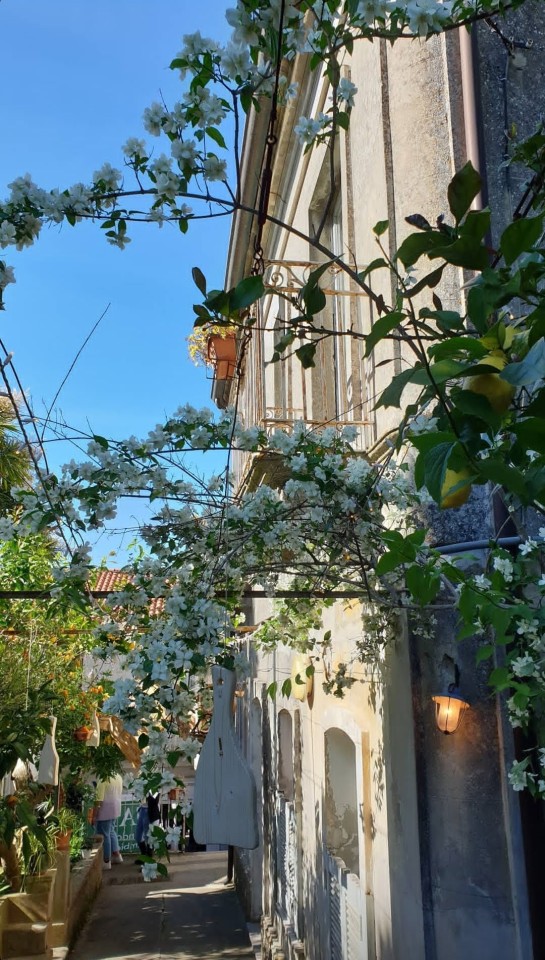
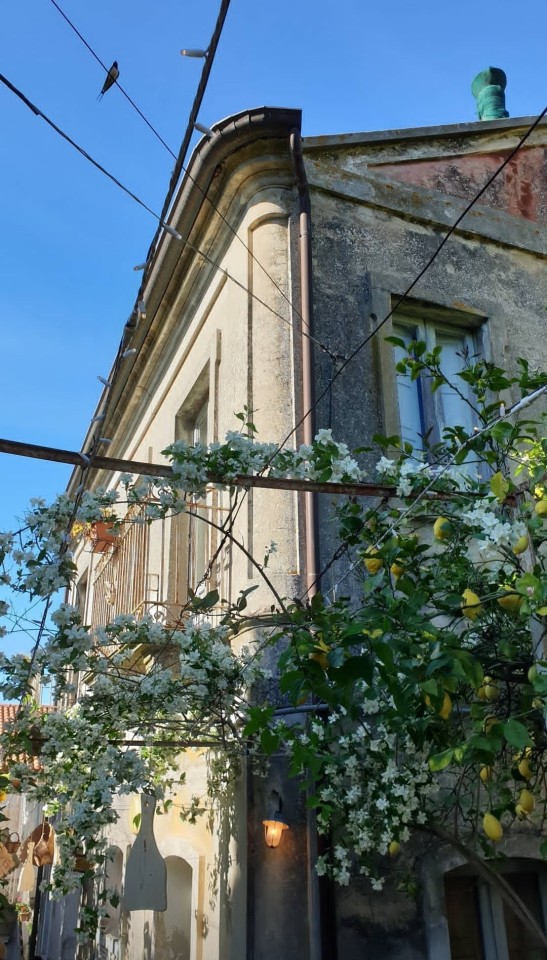

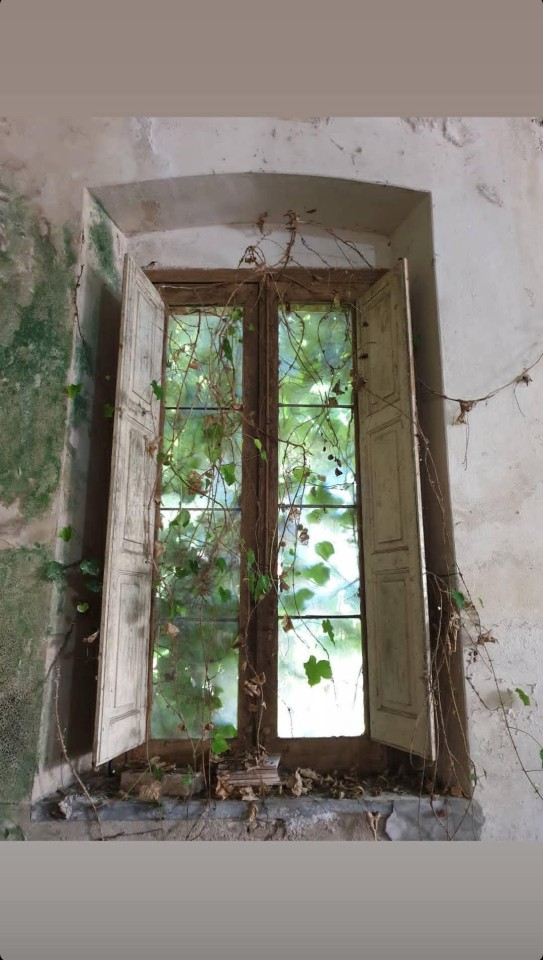
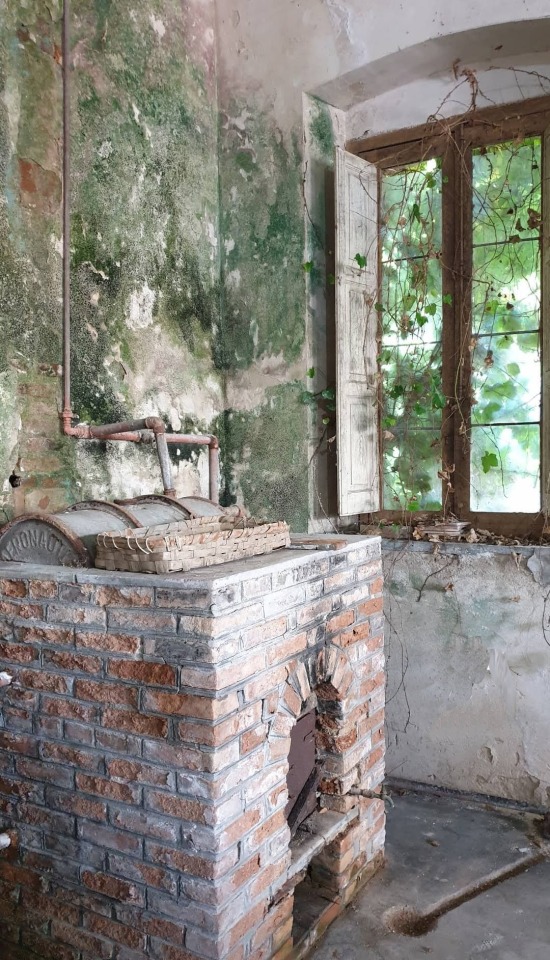
Urban exploration in Cessaniti, Calabria, Italy
Follow us on Instagram, @calabria_mediterranea
#cessaniti#calabria#italy#italia#south italy#southern italy#urbex#abandoned place#abandoned places#flowers#mediterranean#citrus#lemons#lemon#agriculture#buildings#building#abandoned buildings#urban exploration
55 notes
·
View notes
Text
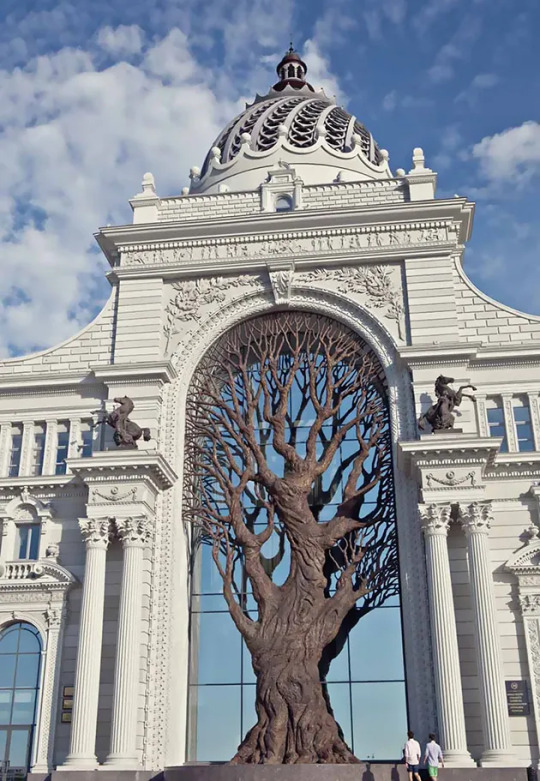


Ministry of Agriculture of the Russian Federation - Building in Kazan, the capital of Tatarstan in the Russian Federation
#ministry of agriculture#building#kazan#the capital#tatarstan#russian federation#russia#rusia#europe#europa
191 notes
·
View notes
Text
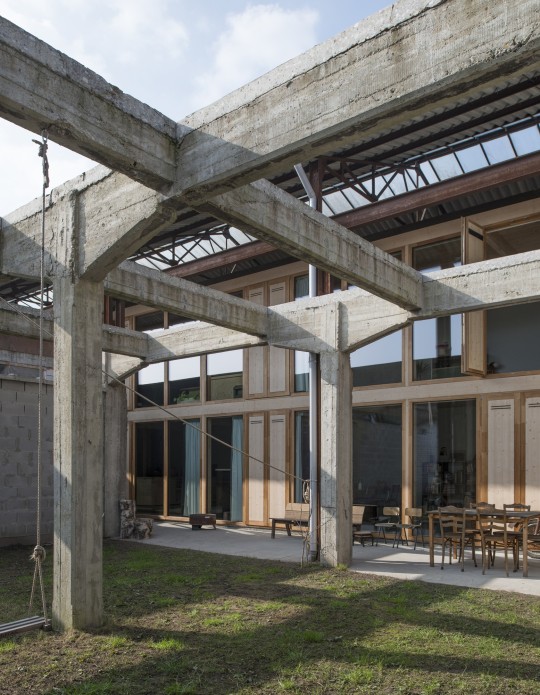






Industrial Conversion, Gent - GAFPA
#GAFPA#architecture#design#building#modern architecture#house#interiors#concrete#minimal#house design#industrial#extension#renovation#old and new#agricultural#courtyard#living room#belgium#ghent#cool architecture
74 notes
·
View notes
Text
An old hay barn built in the 40s, which I painted to look as it did when newly built:
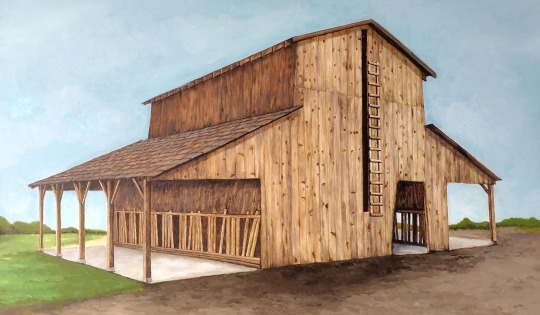
Here is a photo of the barn as it looks now:

Below are other reference photos:
I found a local building with shingles like those the barn originally had, and found a picture of a young cedar fence on the internet I used to imitate the original color of the cedar barn.

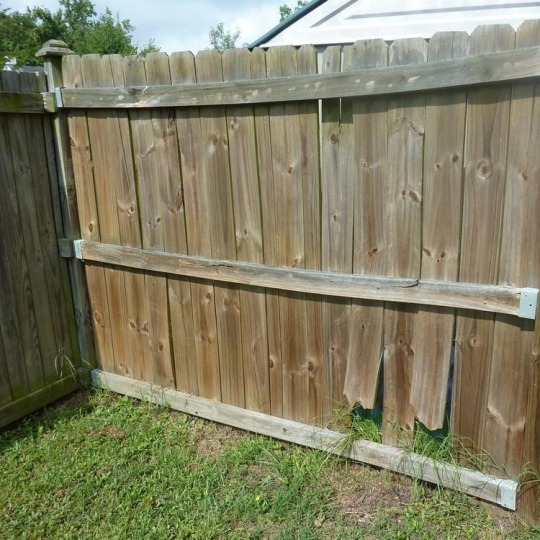
I painted this barn as a commission for someone:
Her father built this barn, and now it needs to be torn down. She wanted a picture of it the way she remembered it as a child, so she asked me to reconstruct it in a painting.
The barn was built for cows to feed at, and she explained how it was constructed:
The barn was filled to the roof with loose hay, which would be accessible at the feeding stations under the two side roofs. The walls are sloped so the pressure of the massive hay pile doesn't bow them outward. Her father climbed the ladder next to the long window going up the side of the barn to reach the top of the stack to add more or spread out the hay more evenly.
Media: watercolor on Claybord
#art#artists on tumblr#old barn#old building#traditional art#history#agriculture#cows#my art#my artwork#painting#watercolor#original art#americana#rural aesthetic#abandoned buildings#ruralcore#farmland#barn
20 notes
·
View notes
Text



Chiusdino (2) (3) by Michele Palombi
Via Flickr:
(3) Val di Merse.
11 notes
·
View notes
Text
decided to put the various doorways into bubbles on a tree and it's starting to look cool :3

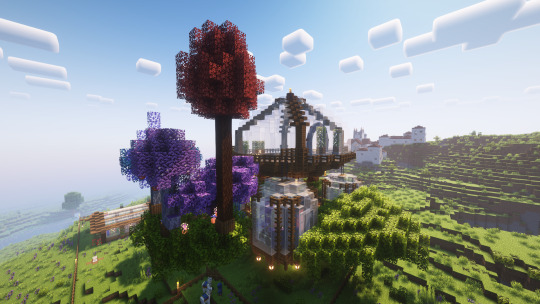
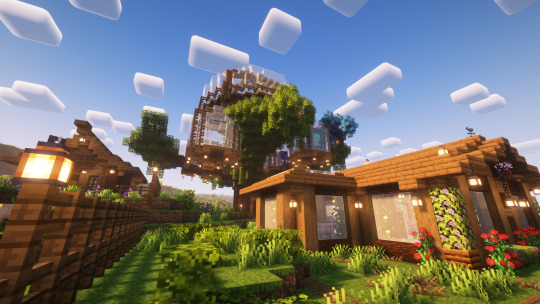
already went to the Blue Skies dimensions, so that side is progressing nicely :D the other side is for Nether and Aether shenanigans, and i'll have twilight Forest under the tree in a canopy-like thing (future project). i'll probably have a basement for the underdark gate, but i don't know yet, don't really know what that dimension is good for :D
my minecraft builds
#minecraft#modded minecraft#minecraft build#inky's minecraft adventures#i'm having a lot of fun yes#gonna try growing stuff next mystical agriculture looks promising#inky's mind
12 notes
·
View notes
Text
I would really like somehow someway to put my education in agriculture towards a social movement -- in food sovereignty and sustainable systems, and things like that. But honestly I have no clue how to do so. Where I am agriculture is very dominated by more privileged white farmers that can afford technological and chemical solutions to problems, and so conventional ag is the dominant system. Everything I've read thus far makes it sound like the only way to influence that group of people is to establish a farm myself and have them come around eventually by proving I'm not insane (and proving that I make a profit), which would require personal capital that I simply don't have and couldn't get for years (if even, in this economy). There is a city nearby but it doesn't have an urban agriculture movement like a lot of major cities do, as far as I'm aware at least.
Idk, I've been spending a lot of time frustrated at the existing possibilities of what I can do where I am with my degree, that maybe I haven't been thinking and learning outside the box enough. I think I'm going to move towards learning more about grassroots movements and organizations and being a good community member. I feel that might reveal a door I can't see right now.
#rambling#if anyone has resources on community building and grassroots movements i would love u so much#but I'm going to look around myself as well#agriculture#agroecology#food sovereignty#it doesn't help that I'm an introvert but I'm determined to wedge myself in somewhere
23 notes
·
View notes
Text
Minnesota State Fair seed art.

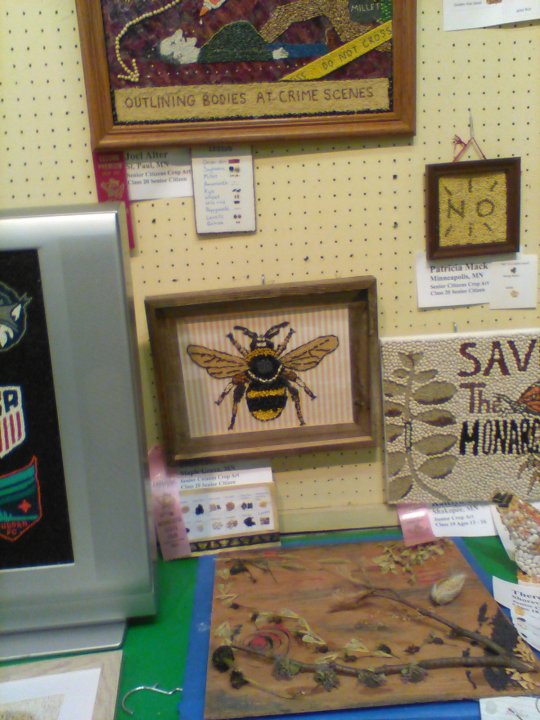

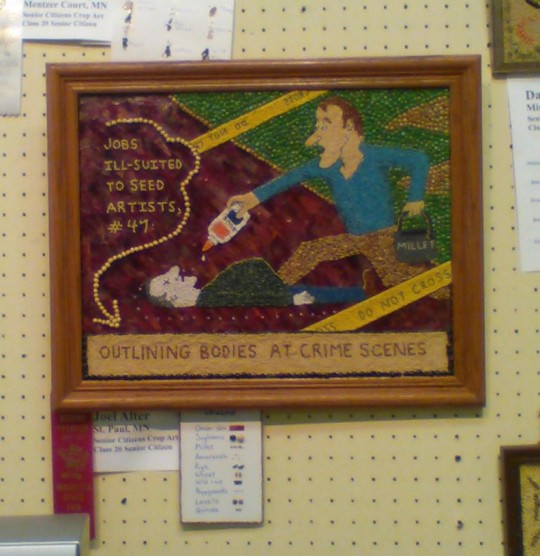











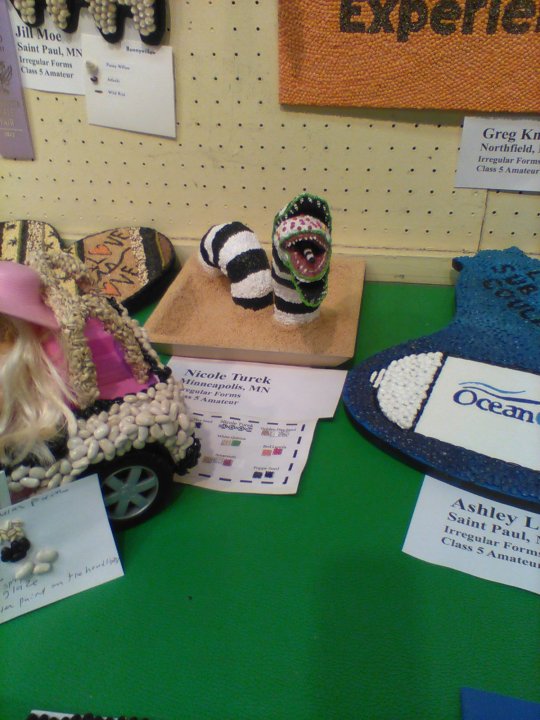



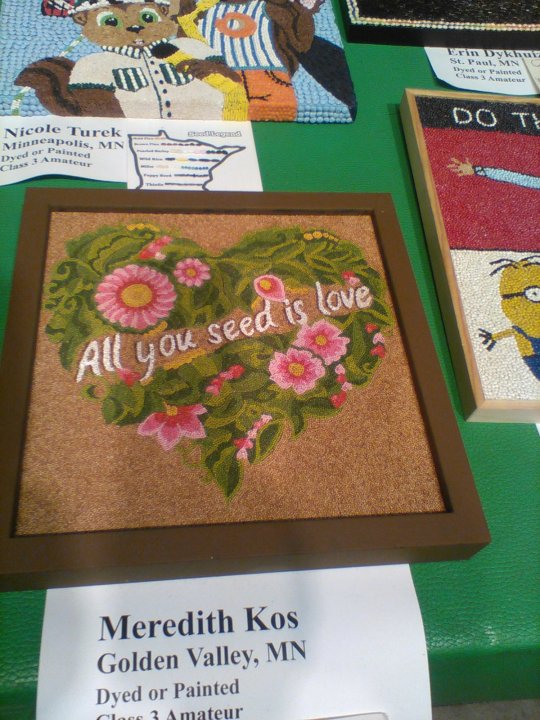





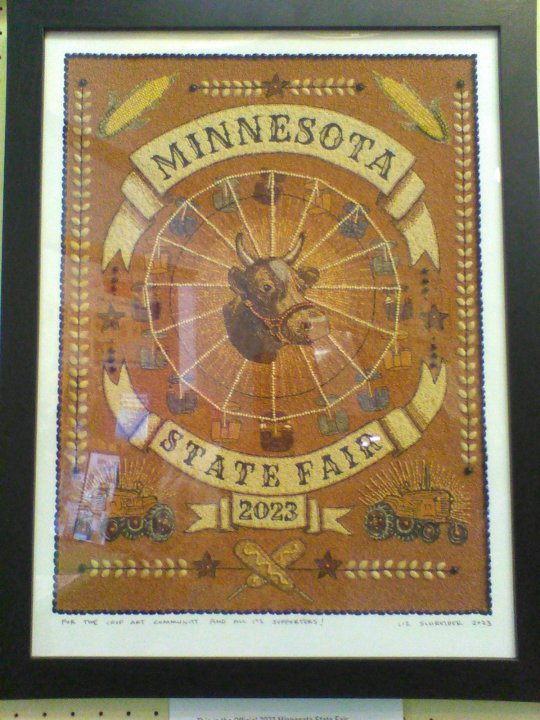
@arianatheangel-girl Here's the seed art photos I took. I didn't get all the art (too many, and some I didn't like), but this is most of it.
The last picture is of the art that was turned into this year's fair poster and t-shirt.
#Minnesota Fair#seed art#crop art#The Great Minnesota Get Together#Agriculture Horticulture Building#agricultural art#art#crafts#hobbies
20 notes
·
View notes
Text
"A new community housing development in the Bronx will feature a cool piece of kit: an on-site aerobic digester that can turn 1,100 pounds of food scraps into 220 pounds of high-quality fertilizer every single day.
Built by Harp Renewables, it’s basically a big stomach filled with bacteria that breaks down food scraps and wasted food into their component parts, and in the future could be a standard part of all apartment units as the amount of food waste in American reaches 30% of the total mass of all trash collection.
The Peninsula, organized by Gilbane Development Company, will feature 740 units of affordable housing, 50,000 square-foot light industrial space and equal sized green space, and 15,000 feet of commercial space, all of which will send their castaway comestibles right into the digester...
Fast Company reports that Christina Grace, founder of a zero-waste food management company, helped plan the design and implementation of the digester into The Peninsula, and helped organize a 40% grant from the city to pay the $50,000 upfront cost.
“The goal is for this material to work its way into the community garden network in the Bronx,” [Christina Grace, who helped plan the design] told the magazine, adding that she expects it to pay for itself over just a few years. “We see this as highly replicable in both commercial and residential venues. We know there’s a need for fertilizer.”
Producing fertilizer right there in the city reduces the need for it to be trucked in from afar, chipping away, even if just a bit, at NYC traffic.
Big problem solver
Perhaps uniquely beneficial to New York City compared to other spots in the U.S. is that the digester will have a significant impact on the Bronx’s share of the city’s rodent problem.
Those who’ve watched the Morgan Spurlock documentary Rats will understand why that’s significant—while those that haven’t will have to imagine what living in a megacity where rats outnumber people by around 8 or 10 to 1 looks like.
Another big problem the bio-digesters could potentially help is pollution and greenhouse gas emissions. Fertilizer is a big emitter of all three of the most-targeted GHGs. Fertilizer, like quarry dust and ammonia is, like so many commodities, often imported from countries who specialize in its production, such as Norway, but also Russia and Ukraine, whose conflict has recently highlighted the fragility of the supply chain with sharp increases in prices...
Bio-digesters by design keep the CO2 and methane in the fertilizer produced, rather than it entering the atmosphere.
For these reasons and more, the aerobic bio-digester is slowly making its way into residential and industrial spaces around the country.
GNN reported on an enormous bio-digester at the heart of the D.C. advanced resource (sewage) recovery center outside the capital, and on the use of bio-digesters on Australian pig farms which are helping reduce the environmental and psychological impact of the effluent produced from such operations.
Harp Renewables tweeted how happy they were to have installed their bio-digester in the town of Cashel, Ireland.
Expect to see more stories like this pop up around the globe."
-via Good News Network, March 17, 2022
Note: Obviously gentrification bad and "affordable housing" is sometimes nowhere near as affordable as it should be, etc. etc. That said, this is such a fantastic use case that I felt I had to post it anyway.
#new york#new york city#bronx#bronx new york#supply chain#fertilizer#circular economy#sustainability#sustainable architecture#sustainable agriculture#united states#apartment buildings#bio-digester#good news#food waste#organic waste#hope#hope posting
323 notes
·
View notes
Text
the things I think about doing to make gposing an idea easier
#shdjdjdjd I have sad EW gpose ideas but I am gonna have to settle bc I cannot access an area I would like#Shdjdjd so my idea was going to UT and blowing myself up as Blu mage to get a better pose#or I could look for a pose that might work better#ANYWAY I have a lot of symbolic feelings about elpis flowers + eyrie’s death + scythes#endwalker spoilers#the symbolism of a scythe being an omen of death. the reaper#but the alternative of it being agriculture#one of life and living and giving unto the people the food they need to live#eyrie being both that of life and that of death. they are a godkiller and savior#at this point in MSQ they have killed both the father and the mother and are left as a child#the added layer of zenos being the bearer of the scythe that kills them#the nail in the coffin. my boy builds coffins. the stake upon the cross—killing that which is holy#a lamb to slaughter for the sake of the life of the people given by the reaper’s scythe#IM LOSING MY MARBLES#oc: eyrie kisne
7 notes
·
View notes
Text

The excitement of the draft has truly permeated the city, bringing energy and enthusiasm that extends far beyond downtown festivities and the general passion for football. Importantly, this event has also shone a light on something less expected but deeply significant: urban agriculture. As the city celebrates new team picks and enjoys its moment in the sports spotlight, community gardens and urban farms are gaining recognition as vital elements of urban life.
It is all too common for underprivileged communities to endure substandard conditions that shouldn’t even be an issue, such as access to clean food. Likewise, our veterans, who have sacrificed immensely for the US, are frequently neglected. Despite the sensitivity of this issue, it reflects our reality. This has spurred a number of grassroots organizations, policies, and nonprofits, both locally and politically, to take action. Among them is the NFL and S.H.I.E.L.D 1, a nonprofit founded by NFL players aimed at boosting economic mobility in underserved areas. They showcased the Green Boots Veteran Community Horticulture Gardens and Marketplace for their community ribbon-cutting event on the city’s westside, which features a GroShed. GroSheds are hydroponic gardening sheds designed for cold climates, allowing year-round access to nutritious, non-toxic, affordable whole foods, thereby addressing the seasonal gaps in fresh produce availability in these communities.
The excitement behind the draft have touched down in the city but it goes beyond the confines of downtown and the fun times and the love of football, this has placed a spotlight on urban agriculture.
Green Boots not only offers nutritious food choices for the local community but also provides a therapeutic outlet for veterans like its founder, Travis Peters, to engage in gardening and improve their mental health.
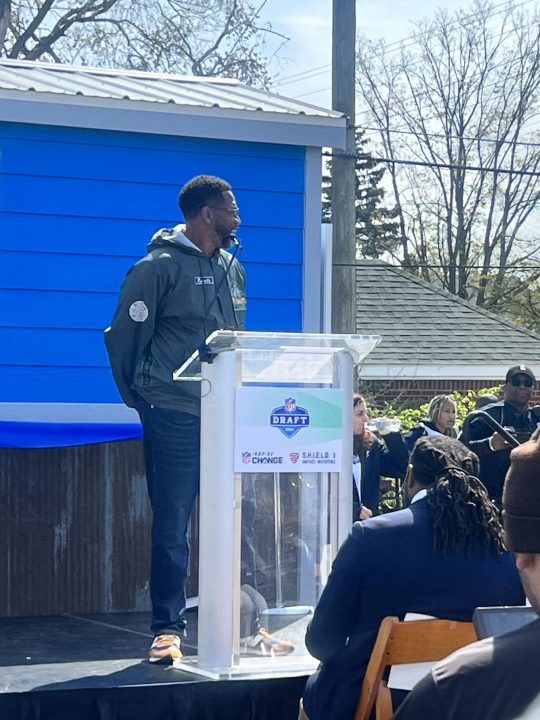
PHOTO: Travis Peters, Green Boots Community Horticulture Gardens and Marketplace
“My mission was to sustain myself, my family, and my community through urban agriculture without leaving our veterans out of the picture,” said Peters. “This place is a multifaceted space where we focus on urban agriculture basic training for our veterans and community along with horticulture therapy and protocols to help bridge the wellness gap.”
“The GroShed will allow us to produce food at a higher rate, a faster and a more economical rate” Peters said. “This space has no city municipalities connection whatsoever. We run on solar power and rainwater, I rely on nature and just what the earth gives us.”
Standing alongside community members and local media were NFL Commissioner Roger Goodell, United States Secretary of Agriculture Tom Vilsack, Senator Debbie Stabenow, New Orleans Saints Linebacker Demario Davis, NFL Cornerback Josh Norman, and NFL Legend Alex Lewis.
“Travis is an extraordinary man and I’m proud to be here on behalf of the NFL,” said Goodell. “I’m also inspired by our players. There are two players here that have really led the way. Damario Davis and Josh Norman. For the last 4 or 5 years I’ve heard about this concept and their desire to make this happen and they have worked to make this happen. It has been their undying support to bring this into fruition not just here in Detroit but also in Buffalo. These men are not just great professional athletes, they are stand up men.”
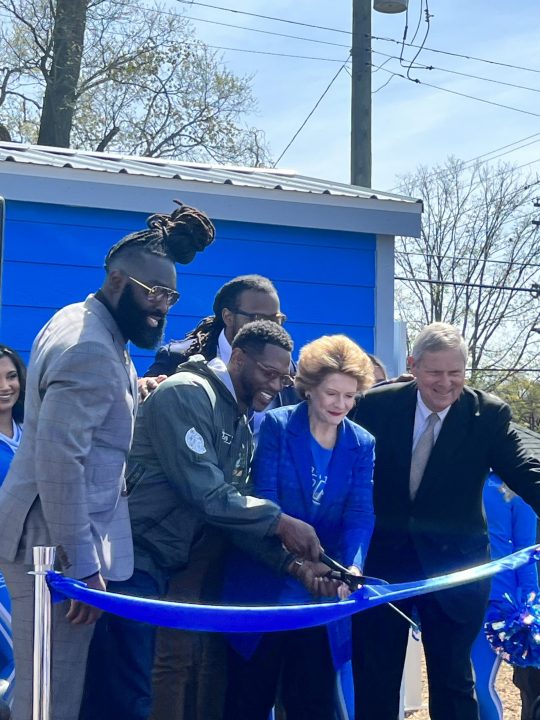
PHOTO: New Orleans Saints Linebacker Demario Davis, Travis Peters, NFL Cornerback Josh Norman, Senator Debbie Stabenow, United States Secretary of Agriculture Tom Vilsack.
This event is part of the NFL’s Inspire Change social justice initiative. Inspire
Inspire Change is designed to reduce barriers to opportunity, especially in communities of color, demonstrating the collective efforts of the NFL family—current and former players, teams, owners, and the league office—to foster positive change. The initiative operates at all levels within the league, with a mission to showcase their commitment to social justice and community improvement.
This GroShed initiative all started when Davis took a trip to Flint, MI a few years ago and realized there was a need for clean water. At the time he witnessed truckloads of water bottles being dispersed throughout the city, but he had an epiphany regarding his charity work, “What’s going on with the water system? That’s when we moved from doing just the charity work to finding sustainable solutions in the community.”
“This is a continuation of our work that we’re doing in other cities,” said Davis. “We are committed to bringing sustainable solutions to communities that have traditionally been marginalized. This work touches me personally. It brings our hearts joy.”
The NFL is collaborating with the White House on the “Challenge to End Hunger and Build Healthy Communities” initiative, highlighting this effort at the event.
Amidst the backdrop of steel and concrete, a transformation is quietly taking root—a healthy mindset. Spearheaded by Peter and powered by the enduring strength of the local Black community, this initiative isn’t merely about planting vegetables; it’s a reclaiming of urban spaces, turning them from symbols of decay into beacons of hope and growth. These community gardens are not just places to grow food; they are sanctuaries of empowerment, where residents, burdened by economic hardships and societal neglect, find a powerful form of expression and control over their lives and environment.
Peter’s movement is leveraging a rich yet underrecognized legacy of Black horticulture expertise, challenging the stereotype that urban communities lack the green thumbs or know-how. Each garden plot and GroShed serves as a testament to resilience and innovation, with every plant sown echoing the community’s deep-rooted connection to the land and their ancestors wisdom. This isn’t just about horticulture; it’s about cultural heritage, community, a bridge connecting past generations who tilled the soil for sustenance to a modern movement for food sovereignty and social justice.
“I started a number of years ago putting in place opportunities and extra support where veterans can go into farming,” said Senator Debbie Stabenow and chair of the agriculture, nutrition and forestry committee in Washington D.C. “We now have veteran organizations and veteran farmers around the country with the largest group in Michigan.”
Absolutely, agriculture transcends the rural boundaries we often confine it to; it’s very much a vibrant part of urban landscapes as well. Urban agriculture is about more than just growing food; it’s about building community, fostering sustainability, and ensuring access to healthy, affordable meals. Echoing this sentiment, Senator Debbie Stabenow said, “This is about providing healthy food in a sustainable way right here in our urban communities.”
This movement reshapes the concept of what it means to be a community. It’s a collective effort where city dwellers reconnect with their food sources and with each other, breaking down the isolation that urban environments can sometimes foster. Urban agriculture initiatives make it possible for fresh produce to travel just a few yards from soil to table, drastically reducing food miles and providing a stark contrast to the impersonal nature of mass food production.
Moreover, these initiatives are a testament to the adaptability and ingenuity of urban communities. Each space cultivated is a step towards a more sustainable urban existence, proving that the heart of agriculture isn’t found solely in wide-open spaces but wherever there are people willing to plant the seeds of change.
“The Greenboots community displays the real work,” Davis said. “You guys are the heroes and deserve the brightest light to be on you all. They are on the ground doing the work, it is people that are in the trenches that really keep the game going. So, thank you for your work.”
#Draft Day Spotlight: Beyond the Field#the NFL and Detroit Embraces Urban Agriculture#Detroit#Detroit Gardens#Detroit Urban Ag#Grosheds#Greenboots#Detroit Greening#Challenge to End Hunger and Build Healthy Communities#End Hunger#End Childhood Hunger in America#End Hunger Initiative#Flint Michigan#Flint Water Crisis#GroShed initiative#Lil Miss Flint
3 notes
·
View notes
Text
I think im only gonna plan my campaign up to level 10 then whatever happens happens. leaving the plot from there up to my players. your turn to weave the narrative bitch
#by which I mean. the campaign will suddenly shift from railroad to sandbox#there is a purpose and reason for it. and actually I am saying this because I planned this much and then realized#there IS no way to railroad anything after that#it is impossible for me to plan ahead what the party will do with what they know at that point#so. embrace it. their world now#well. in however long it takes to get there#this has been a post#this is why im tryna build the whole world before we start#like I could just be vague about it and only define the parts we need as we need them#but even the supposedly railroaded bits. how can I predict where and how they’ll go off the tracks?#and like a better question is WHY did I decide to build a whole damn world instead of using something prewritten#and well. the answer is quite simple. and also twofold#a) I haven’t found a prewritten campaign that I want to run (that someone isn’t already running for me)#b) there’s a specific element of this world I want to explore that can’t be transposed into an existing setting#so. here I am. researching Roman agriculture#dnd
17 notes
·
View notes
Text
12 notes
·
View notes
Text

#fruit#and#vegetables#storage#shed#vintage#carpentry#blue#print#food#food storage#agriculture#building
2 notes
·
View notes